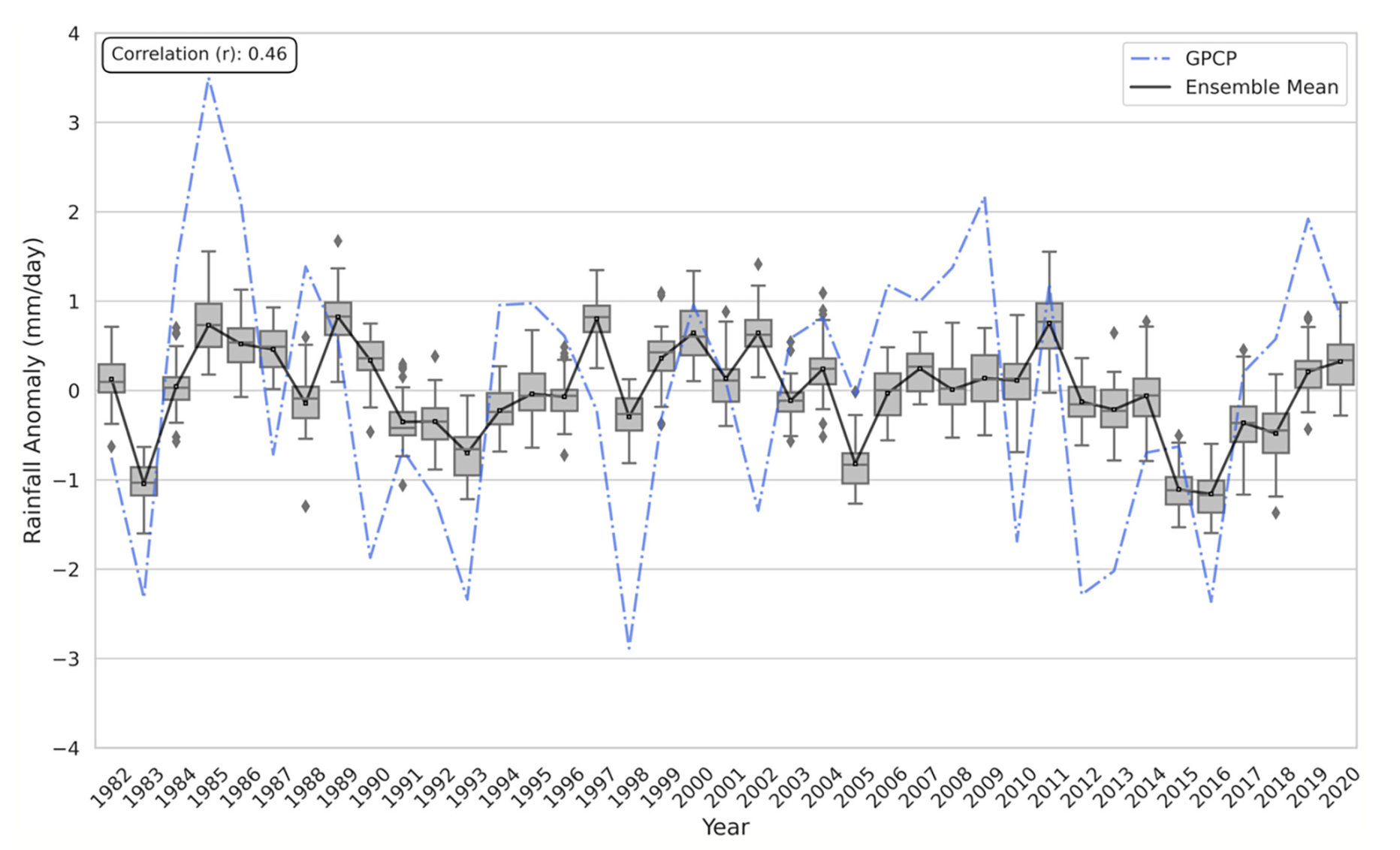A simple GCM known as DREAM has been used as a tropical seasonal forecast model in a range of studies carried out at FUNCEME, Fortaleza, Brazil. The model is forced by empirically derived source terms and includes basic parameterisations to simulate vertical diffusion, convection and condensation. To test the forecast skill of the model, historical forecasts were made of the rainy season in northeastern Brazil. They cover February-April season in the years 1982–2020, and have been extended as operational forecasts up to 2025.

Ensemble forecasts with 38 members are initiated on 1st January with persisted tropical sea surface temperature anomalies (SSTAs). Fig. 1 shows the model climatological precipitation compared to observations. There is a dry bias in the region as model rainfall maximum is displaced in the northwest. Fig. 2 shows hindcasts compared to observed precipitation anomalies in the region. Model forecasts correlate positively with the observations, although the variance is somewhat weaker. Given its rapidity and economy, DREAM performs reasonably well compared to a fully specified GCM.

More details in this paper:
- Francisco das Chagas Vasconcelos Junior, Nicholas M.J. Hall, Leticia Cardoso, Aubains Hounsou-Gbo and Eduardo Martins, 2025: Simple GCM simulations of rainfall over Northeast Brazil, Part 2: Model performance for historical seasonal forecasts. Int. J.Climatol, http://doi.org/10.1002/joc.8725.


